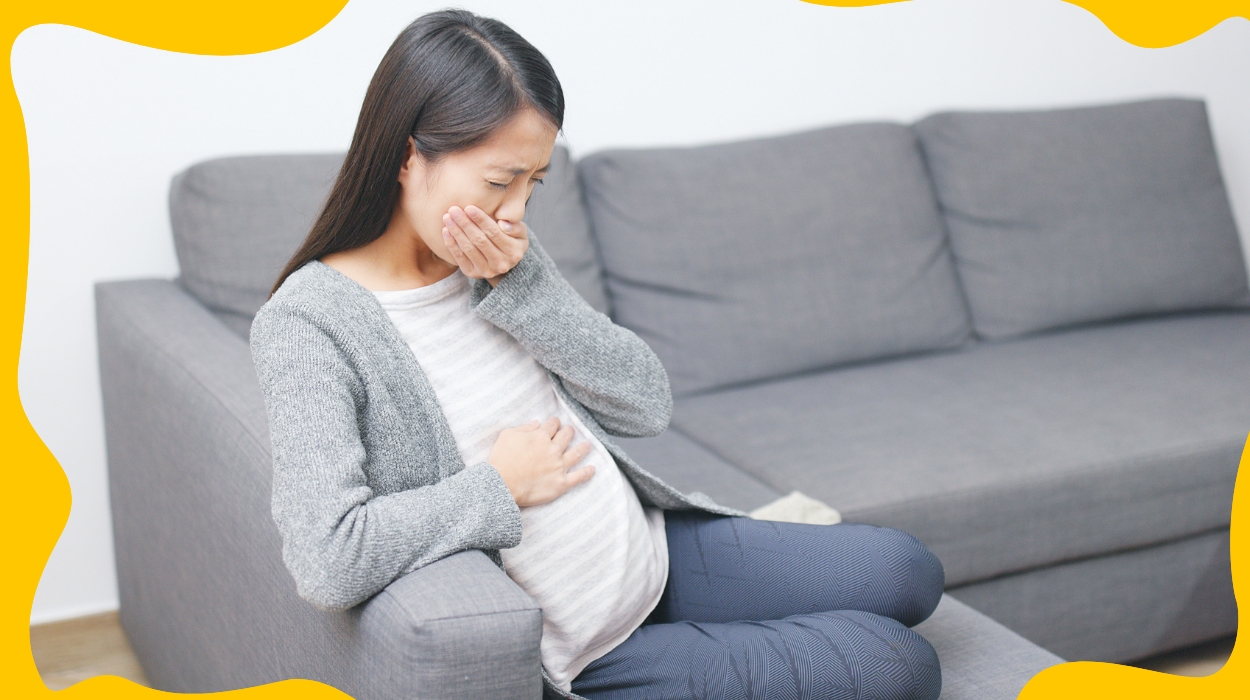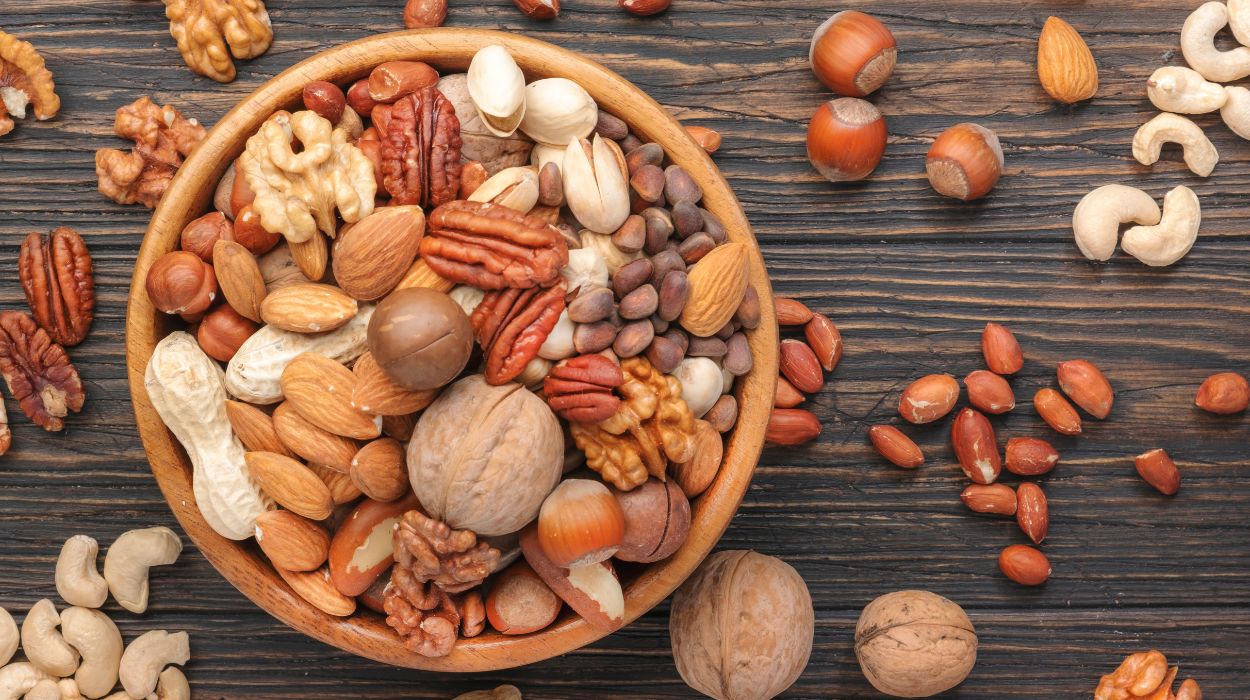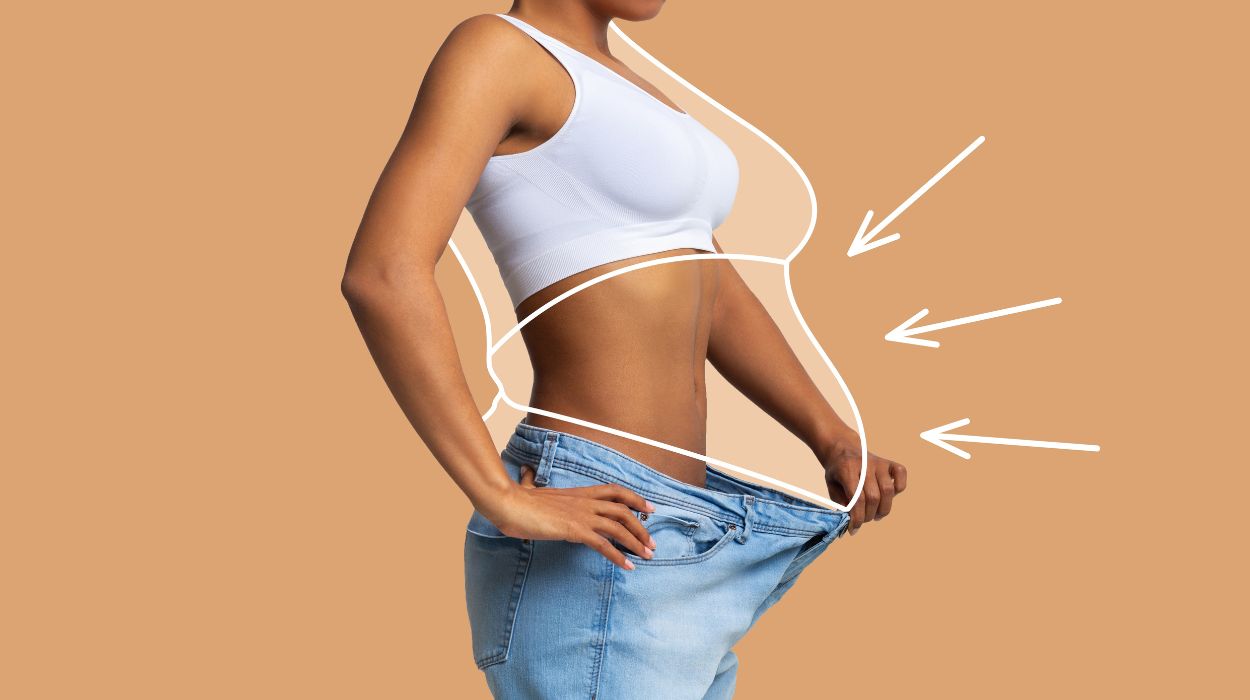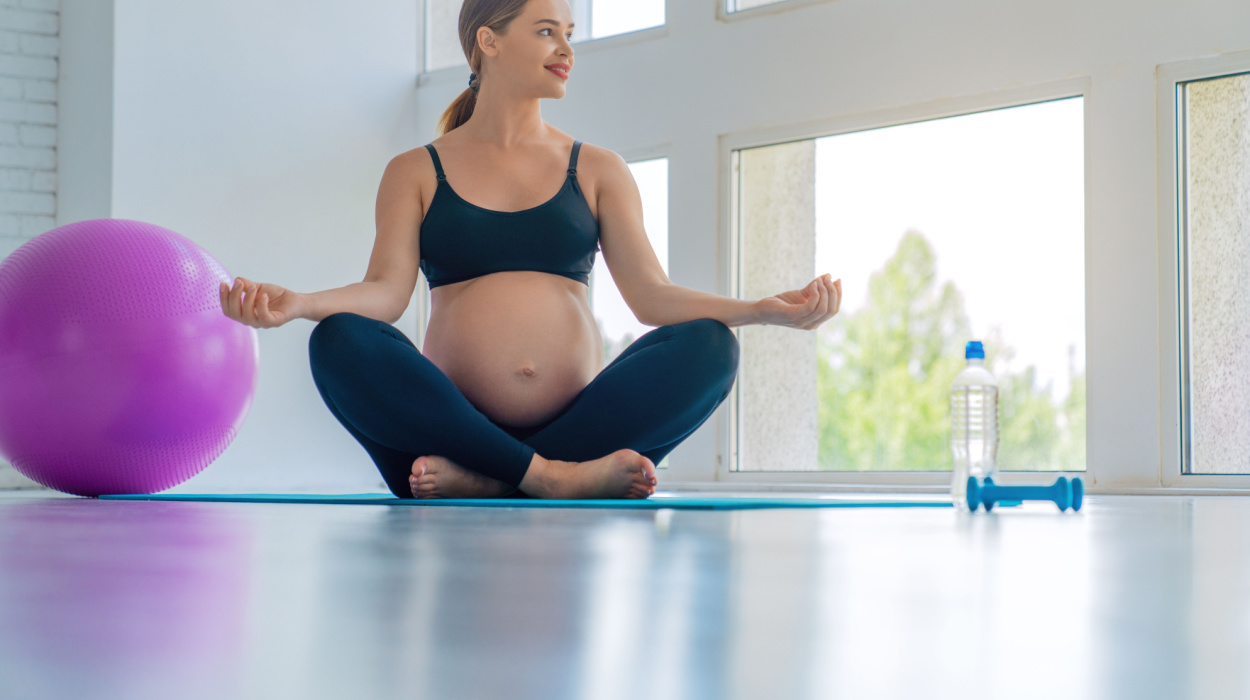How To Avoid Toxic Chemicals in Baby Products: Free Guide 2024

In the early stages of parenthood, safeguarding your little one becomes your top priority. As you embark on the journey of nurturing your baby, it’s essential to be mindful of the potential hazards lurking within everyday baby products. Toxic chemicals have stealthily made their way into our homes, posing risks to our baby’s fragile health.
In this comprehensive guide, we delve into the world of baby products and the presence of toxic chemicals.
Join us as we navigate the labyrinth of baby products, offering insights on natural alternatives, highlighting the importance of avoiding exposure, and shedding light on the role of organizations such as the Environmental Working Group. Let’s create a harmonious environment that shields your baby from harm and embraces their sensitive needs.
Why Should You Be Worried About Toxic Chemicals?
From baby bottles to diapers, bath products to skincare essentials, it’s crucial to understand how to identify and avoid harmful substances. By arming yourself with knowledge and seeking safer alternatives, you can provide a protective cocoon for your baby’s well-being. In this article, let’s explore the concerning implications of chemicals like sodium laureth sulfate, parabens, and chemical flame retardants. From discussing the impact on your baby’s delicate skin to potential long-term health concerns, we leave no stone unturned.
Concerns About Toxic Chemicals in Baby Products
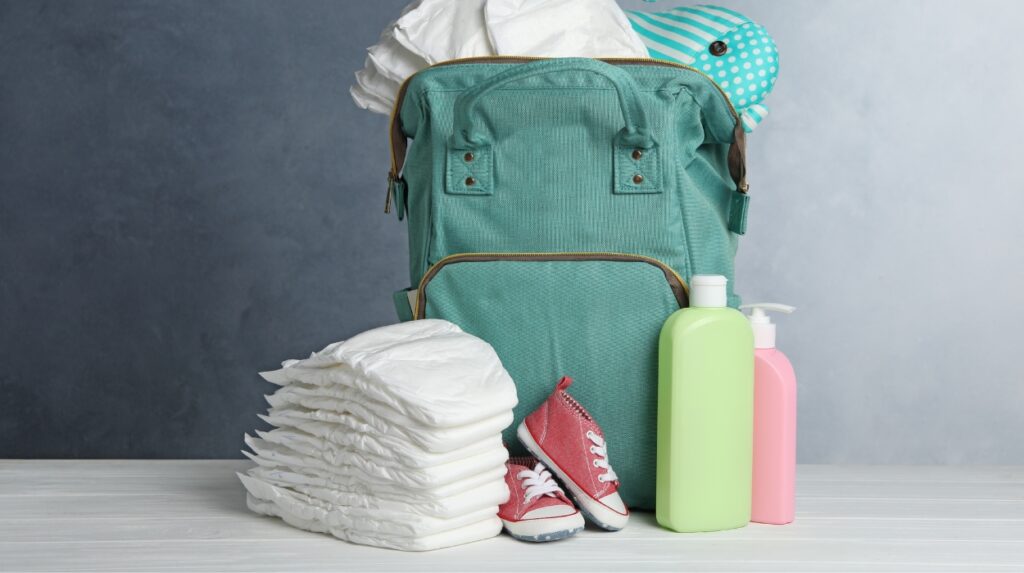
Toxic chemicals in baby products should be a cause for concern due to several compelling reasons. Let’s explore why you should be worried about their presence:
Health Risks
Toxic chemicals, such as endocrine-disrupting chemicals, sodium laureth sulfate, and chemical flame retardants, can have severe implications for human health. Exposure to these harmful substances is linked to skin irritation, allergic reactions, reproductive system disorders, and an increased risk of certain cancers.
Developmental Vulnerability
Babies, with their delicate skin and still-developing bodies, are particularly susceptible to the effects of toxic chemicals. Their early exposure to substances like parabens and volatile organic compounds can disrupt their hormonal balance, potentially leading to long-term health issues and early puberty.
Environmental Impact
Chemicals in baby products, including those found in diapers and baby wipes, can find their way into the environment. This contamination poses risks to aquatic life and the overall health of our ecosystems, highlighting the importance of sustainable and eco-friendly alternatives.
Regulatory Concerns
Despite some efforts to regulate the use of harmful chemicals, there still needs to be more oversight. This lack of strict regulation means harmful substances may persist in baby products, potentially exposing infants to unnecessary risks.
By being aware of the presence of toxic chemicals in baby products, such as baby bottles, baby powder, and baby shampoos, you can take proactive steps to minimize exposure and prioritize the health and safety of your little one. Opting for natural alternatives, reading product labels, and staying informed about the latest research can empower you to make informed choices and protect your baby from potentially harmful substances.
Potentially Harmful Chemicals in Baby Products
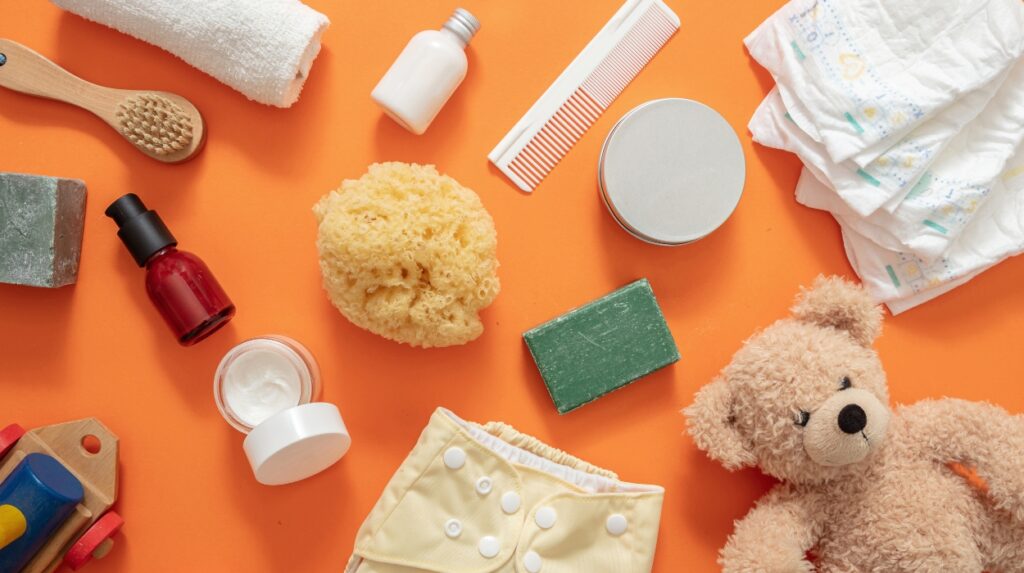
When it comes to baby products, it’s crucial to be aware of potentially harmful chemicals that can be present. Here are some of the keywords to look out for when evaluating the safety of baby products:
Parabens
These preservatives, including methylparaben and propylparaben, have raised concerns due to their potential endocrine-disrupting properties. Avoiding products that contain parabens can help reduce exposure.
Phthalates
Often found in plastics and fragrances, phthalates have been linked to hormone disruption and may pose risks to the developing reproductive systems of babies. Look for phthalate-free products, particularly items like baby bottles and toys.
Sodium Lauryl Sulfate (SLS) and Sodium Laureth Sulfate (SLES)
These surfactants are commonly used in personal care products to create foaming action. However, they can sometimes cause skin irritation and dryness, especially in babies with sensitive skin.
Fragrances
Synthetic fragrances, indicated as “fragrances” on labels, can contain various undisclosed chemicals. Some fragrance ingredients have been associated with allergic reactions and respiratory sensitization. Opting for fragrance-free products with natural scents can minimize potential risks.
Talc
Talcum powder, found in baby powders, can sometimes contain asbestos, a known human carcinogen. It’s important to exercise caution and consider talc-free alternatives to reduce the risk of respiratory problems.
You can make more informed choices when selecting baby products by being knowledgeable about these potentially harmful chemicals, such as parabens, phthalates, SLS/SLES, fragrances, and talc. Prioritizing products labeled as free from these substances or seeking natural alternatives can help minimize your baby’s exposure to potentially harmful chemicals
Are Toxic Chemicals Allowed in Baby Products?
The presence of toxic chemicals in baby products is concerning, and regulations surrounding their use vary. While specific regulations exist to ensure product safety, not all harmful chemicals are explicitly banned from baby products.
Regulatory bodies like the FDA, ECHA, and Health Canada have established guidelines and restrictions on certain chemicals in baby products. However, the regulatory landscape may not cover all potentially harmful substances. Loopholes, gaps in oversight, and limited ingredient disclosure requirements further complicate the situation.
Educating yourself about potentially harmful chemicals commonly found in baby products is crucial. Research product ingredients, choose reputable brands with transparent labeling practices, and look for third-party certifications.
As responsible consumers, we can advocate for stronger regulations, support organizations focusing on product safety, and encourage manufacturers to prioritize the use of safe and non-toxic ingredients.
By staying informed and making conscious choices, we can reduce our baby’s exposure to toxic chemicals in products. Protecting our little ones is of utmost importance, and taking proactive steps can create a safer environment for them.
Baby Products Could Have Toxic Chemicals
“Baby products could have toxic chemicals” is an alarming reality that caregivers must be aware of. Despite regulations aimed at ensuring product safety, it is possible for harmful substances to be present in these products. It is crucial to take proactive measures to protect your baby’s health.
Various factors contribute to the potential presence of toxic chemicals in baby products. Loopholes in oversight, limited ingredient disclosure requirements, and inadequate regulations can allow manufacturers to include harmful substances legally.
Common toxic chemicals in baby products include parabens, phthalates, formaldehyde, and certain fragrance ingredients. These chemicals have been associated with health risks such as allergies, hormone disruption, and skin irritation.
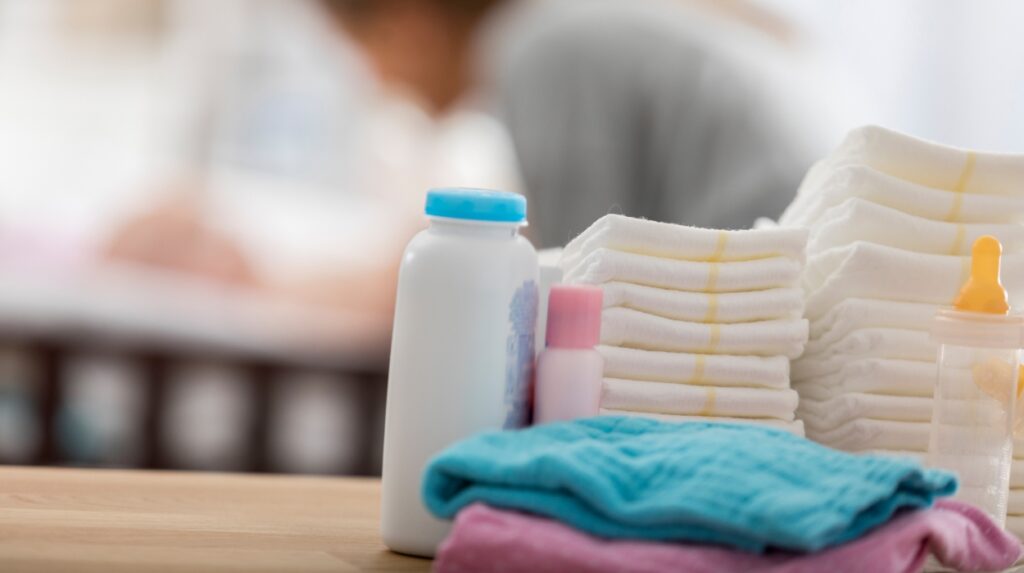
To mitigate these risks, it is essential to research and choose baby products from reputable brands that prioritize safety. Look for products labeled as free from harmful substances and consider natural or organic alternatives. Seeking information from trusted sources, such as consumer safety organizations, can provide valuable insights into the safety of specific products.
Caregivers can play a vital role in ensuring their baby’s well-being and minimizing their exposure to toxic chemicals in baby products by being vigilant, staying informed, and advocating for stricter regulations and transparency in the industry.
How To Avoid Toxic Chemicals in Baby Products
To avoid toxic chemicals in baby products, being proactive and making informed choices is crucial. Here are some steps you can take:
- Read labels: Carefully read the labels of baby products. Look for keywords such as “parabens,” “phthalates,” “formaldehyde,” and “synthetic fragrances.” Avoid products that contain these harmful chemicals.
- Choose natural and organic products: Opt for baby products labeled as natural or organic. These products are typically made without toxic chemicals and synthetic additives.
- Research trusted brands: Look for reputable brands that prioritize safety and transparency. Check for certifications or endorsements from organizations like the Environmental Working Group (EWG) or the Organic Certification Program.
- Use fragrance-free options: Fragrances can contain undisclosed chemicals. Select fragrance-free baby products or those scented with natural essential oils.
- Consider homemade alternatives: For certain baby care items, like diaper cream or baby wipes, you can make your own using natural ingredients. This gives you control over the ingredients used.
- Educate yourself: Stay informed about the latest research on toxic chemicals in baby products. The EWG and other reliable sources offer valuable information and product recommendations based on safety ratings.
- Minimize product usage: Limit the number of baby products you use to reduce overall exposure. Focus on essential items and avoid excessive use of unnecessary products.
Following these steps and being vigilant can help minimize your baby’s exposure to potentially harmful chemicals in baby products.
Advice on Choosing Safe Baby Products
When choosing safe baby products, being well-informed and making thoughtful decisions is crucial. Here’s some advice on selecting baby products that prioritize safety:
- Research and read labels: Conduct thorough research on baby product ingredients and carefully read labels. Look for harmful chemicals like parabens, phthalates, formaldehyde, and synthetic fragrances. Opt for products that explicitly state they are free from these substances.
- Look for certifications: Seek out products with certifications from reputable organizations, such as the USDA Organic Seal or the Global Organic Textile Standard (GOTS) certification. These certifications ensure that the products meet stringent safety and quality standards.
- Consider natural and organic options: Choose baby products with natural ingredients. These products are typically free from artificial additives, pesticides, and GMOs, making them safer for your baby’s sensitive skin.
- Seek recommendations and reviews: Ask for recommendations from pediatricians, fellow parents, or trusted sources. Online reviews and forums can provide insights into the safety and effectiveness of different baby products.
- Stay updated on product testing and recalls: Stay informed about product recalls and safety testing. Regularly check official websites and resources like the Consumer Product Safety Commission (CPSC) to ensure the products you’re considering are not associated with safety issues.
- Opt for simplicity: Choose baby products with minimal ingredients and features. Avoid unnecessary additives, excessive fragrances, dyes, or potentially irritating components.
- Trust your instincts: Pay attention to your baby’s reactions to products. If you notice any signs of irritation or discomfort, discontinue use and consult a healthcare professional.
By following these guidelines, you can make informed choices and prioritize your baby’s safety when selecting baby products.
Conclusion
Ensuring the safety of baby products is of utmost importance. By being informed, reading labels, choosing natural and organic options, and seeking trusted recommendations, caregivers can reduce the risk of exposing their little ones to toxic chemicals. Prioritizing safety creates a healthier environment for our precious babies.
Frequently Asked Questions
While baby products are regulated, not all undergo comprehensive safety testing before being sold.
Common toxic chemicals include parabens, phthalates, formaldehyde, and synthetic fragrances.
Natural and organic products are generally safer, but it’s still essential to read labels and ensure they meet safety standards.
Yes, certain chemicals can cause skin irritations, rashes, or allergies in babies with sensitive skin.
Read the product label and look for ingredients like parabens, phthalates, formaldehyde, and synthetic fragrances.
Look for certifications like the USDA Organic seal or the Global Organic Textile Standard (GOTS) certification for organic products.
Yes, there are natural and organic alternatives available for various baby care items, including diapers, wipes, and skincare products.
Discontinue use immediately and consult a healthcare professional for advice on managing the allergic reaction and finding suitable alternatives.
+ 5 Sources
Health Canal avoids using tertiary references. We have strict sourcing guidelines and rely on peer-reviewed studies, academic researches from medical associations and institutions. To ensure the accuracy of articles in Health Canal, you can read more about the editorial process here
- Bair EC. A Narrative Review of Toxic Heavy Metal Content of Infant and Toddler Foods and Evaluation of United States Policy. Frontiers in Nutrition. 2022;9:919913. doi:https://doi.org/10.3389/fnut.2022.919913
- Sushmitha C. Baby Care – Baby Care Products and Harmful Ingredients Used in Baby Products. American Journal of PharmTech Research. 2019;9(6):57-76. doi:https://doi.org/10.46624/ajptr.2019.v9.i6.004
- Bernard A. Dermal Exposure to Hazardous Chemicals in Baby Diapers: A Re-Evaluation of the Quantitative Health Risk Assessment Conducted by The French Agency for Food, Environmental and Occupational Health and Safety (ANSES). International Journal of Environmental Research and Public Health. 2022;19(7):4159. doi:https://doi.org/10.3390/ijerph19074159
- Nematollahi N, Doronila A, Mornane PJ, Duan A, Kolev SD, Steinemann A. Volatile chemical emissions from fragranced baby products. Air Quality, Atmosphere & Health. 2018;11(7):785-790. doi:https://doi.org/10.1007/s11869-018-0593-1
- Tchounwou PB, Yedjou CG, Patlolla AK, Sutton DJ. Heavy Metal Toxicity and the Environment. Experientia Supplementum. 2014;101(1):133-164. doi:https://doi.org/10.1007/978-3-7643-8340-4_6


